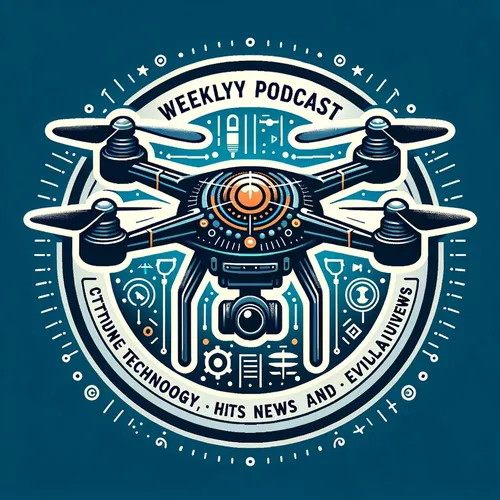Drone Drama: FAA Regs, Army Buys, and Shenzhen Spectacle
- Author
- Quiet. Please
- Published
- Sun 25 May 2025
- Episode Link
- https://www.spreaker.com/episode/drone-drama-faa-regs-army-buys-and-shenzhen-spectacle--66266130
This is you Drone Technology Daily: UAV News & Reviews podcast.
Today’s landscape for unmanned aerial vehicles is rapidly evolving, with the last 24 hours highlighting both breakthrough events and persistent challenges. The industry’s global spotlight is currently on Shenzhen, where the 9th World Congress of Drones has convened innovators, regulators, and manufacturers from across continents. Discussions there are dominated by electric vertical takeoff and landing advancements, low-altitude digital transport networks, and the integration of artificial intelligence for enhanced autonomy. These trends are more than theoretical—landmark product launches and new regulatory frameworks are rolling out in real time, defining the trajectory for both consumer and enterprise users.
In the United States, regulatory clarity is progressing with the anticipated release of Federal Aviation Administration Part 108 rules, expected to standardize beyond visual line of sight operations, finally making extended-range drone missions mainstream for applications such as delivery, asset inspection, and precision agriculture. These new regulations are set to introduce mandatory detect-and-avoid systems, operator certifications, and refined altitude controls, unlocking opportunities for commercial expansion but also demanding greater technical compliance from operators. Notably, there is no immediate ban on leading Chinese manufacturers like DJI; instead, heightened scrutiny and investigative oversight remain, leaving public safety agencies and commercial users in a holding pattern as they weigh future procurement decisions.
Highlighting the urgency of secure drone operations, the U.S. Army has announced a potential purchase of over 4,000 portable drone detection systems, aiming to bolster situational awareness and counter unauthorized UAV incursions. These detectors promise real-time tracking, threat tagging, and precise geolocation, reflecting a broader defensive trend as the proliferation of autonomous strike drones—such as those now fielded with 100-kilometer ranges in active conflict zones—underscores the stakes for robust countermeasures.
On the consumer front, drone enthusiasts are drawn to the latest flagship models touting multi-sensor obstacle avoidance, sub-250 gram weights for simplified compliance, and record battery longevity. For instance, the newly released models from both Western and Asian manufacturers offer 4K video capture, over 40 minutes of flight time, and advanced pilot assistance modes, narrowing the gap between recreational and professional capabilities. When comparing such models, look for features like real-time kinematic GPS, low-latency transmission, and automated return-to-home as clear differentiators.
Flight safety remains paramount amid this surge. Enthusiasts and professionals alike should regularly update firmware, check national airspace maps via trusted apps, and practice conservative battery management to minimize incident risk. As adoption accelerates—market forecasts suggest double-digit annual growth and a global market surpassing 50 billion U.S. dollars by 2027—staying informed on both regulation and technology innovation is essential for safe, profitable flight. The coming months promise even greater integration with smart cities, logistics, and public safety networks, signaling that the future of unmanned flight is not only airborne but also deeply interconnected.
For more http://www.quietplease.ai
Get the best deals https://amzn.to/3ODvOta
